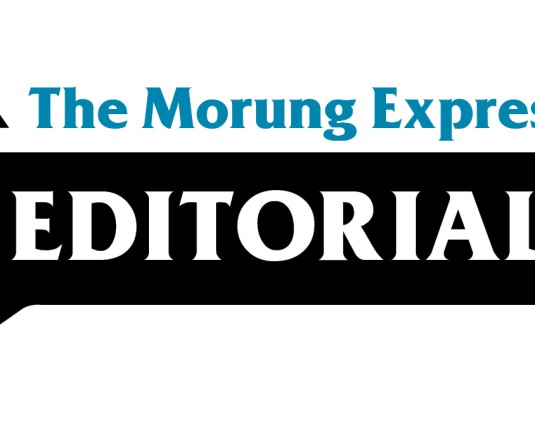
As Nagaland today observes the 42nd Anniversary of its Statehood Day, an element of doubt has set in over the future course of the State’s polity. While there are countless number of challenges to be addressed on the socio-economic front as correctly observed by Governor Shyamal Datta in his Statehood Day address, the unresolved Naga political problem more than anything else stands in the way of the ideals and aspirations of the Naga people. A peaceful negotiated settlement acceptable to all sections of the people needs the urgent attention of all concerned both over-ground and under-ground sections.
While the peace process currently underway aims at bringing about a political solution, a simultaneous process of converging all shades of political opinion into a common forum must also be taken up in all seriousness at the highest level both by the State government and the mass based civil society groups. Failure to do so would only deepen the division among the Nagas. Politics as it has often being said is the art of the possible. It is only the human mind and the self which can make it otherwise. The wisdom (or the lack of it) on the part of leaders more than anything else will determine the path either to upheaval or to a more secure, peaceful and prosperous future for the Nagas.
Although Statehood did not bring about any permanent settlement to the political cause of the Nagas, to be fair to its founding fathers, it opened enormous opportunities for the Nagas to develop and progress. People have to some extent enjoyed the fruits of development but much more still needs to be done. The challenges are many but opportunities are few and this calls for more sincerity from those who run the affairs of the State.
According to the Nagaland State Human Development Report, by the year 2020, it is possible to see a developed Nagaland—with the population under control, the economy growing at accelerated pace, infrastructure such as transport, communication and power improved to modern levels and qualitative health care being provided to the people. But for this to happen in reality, the political leadership in partnership with other stakeholders must work out a holistic approach to development and addressing a wide range of issues by way of adopting a concrete population policy, a rational agriculture and land use policy all aimed towards sustainable development.
Further, the development of infrastructure in the realm of roads, power and communication should remain a high priority area. Another pertinent area to be addressed is the tourism sector as a means of generating wealth and employment. Besides, education and health care development will remain a constant challenge that must be addressed if people are to remain physically healthy and economically productive.
The other aspect which must not be lost sight of is in the creation of a vibrant civil society that will nurture formation of plural identities ie the “we” replacing the “us” and “them” identities. This could do much to create a common national identity in the midst of tribalism raising its ugly head even as we are faced with a politically divided society.
Retrospection on Statehood day will remain incomplete if the need for promoting good governance in Nagaland is not mentioned. It is important to emphasise that good governance must be developed within the context of Naga society. Due consideration must be given to traditions in order to allow the Naga people to identify with their government. As is the case in communitization and village development boards, other positive elements of the political heritage of the Naga people should be adopted in order to form and sustain a governing model unique to the Nagas.
For all these to take place, the sustained and active engagement of all local actors is a necessity. If this is not done, the concept of a Naga Renaissance would remain but a chimera.






